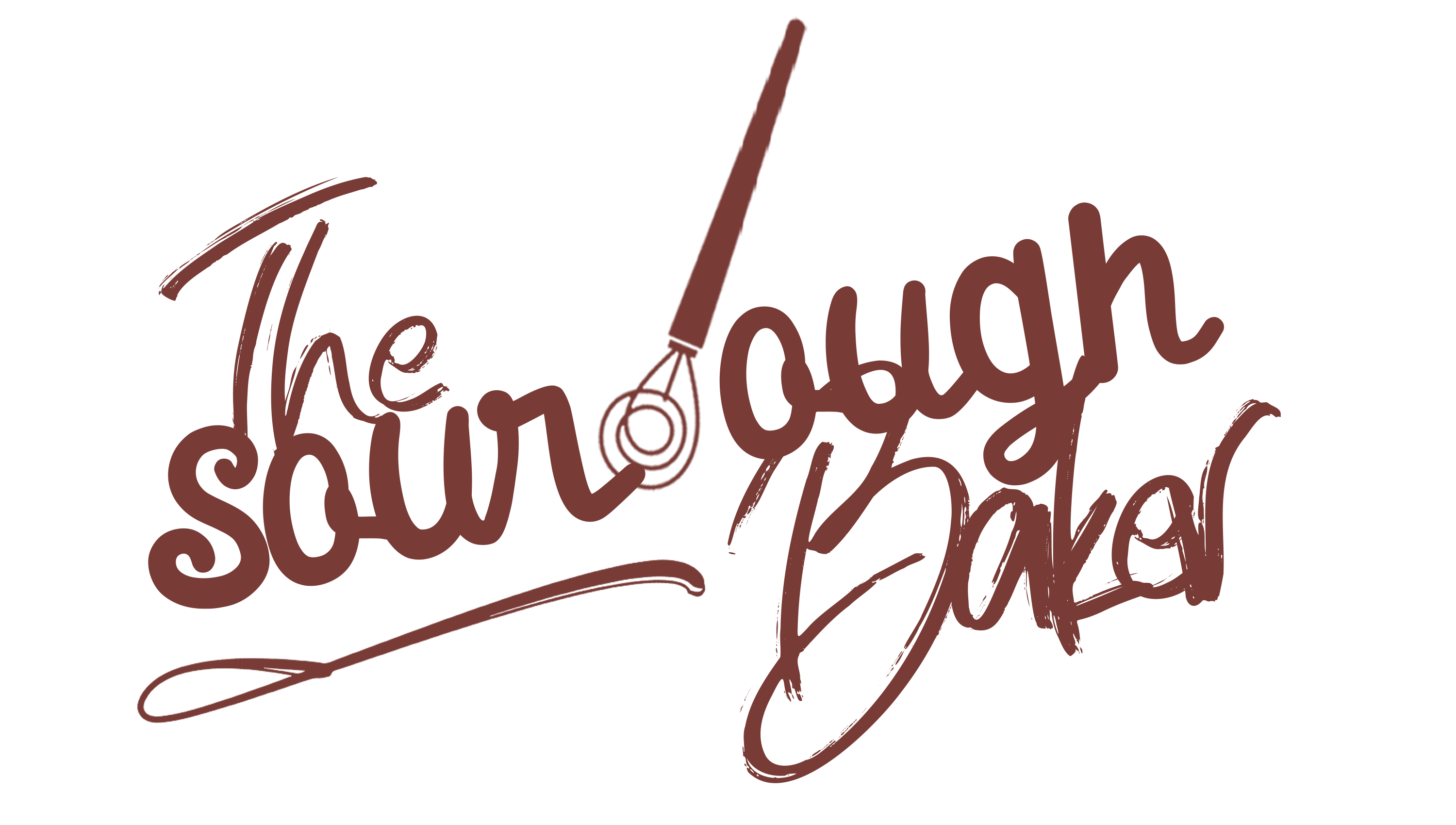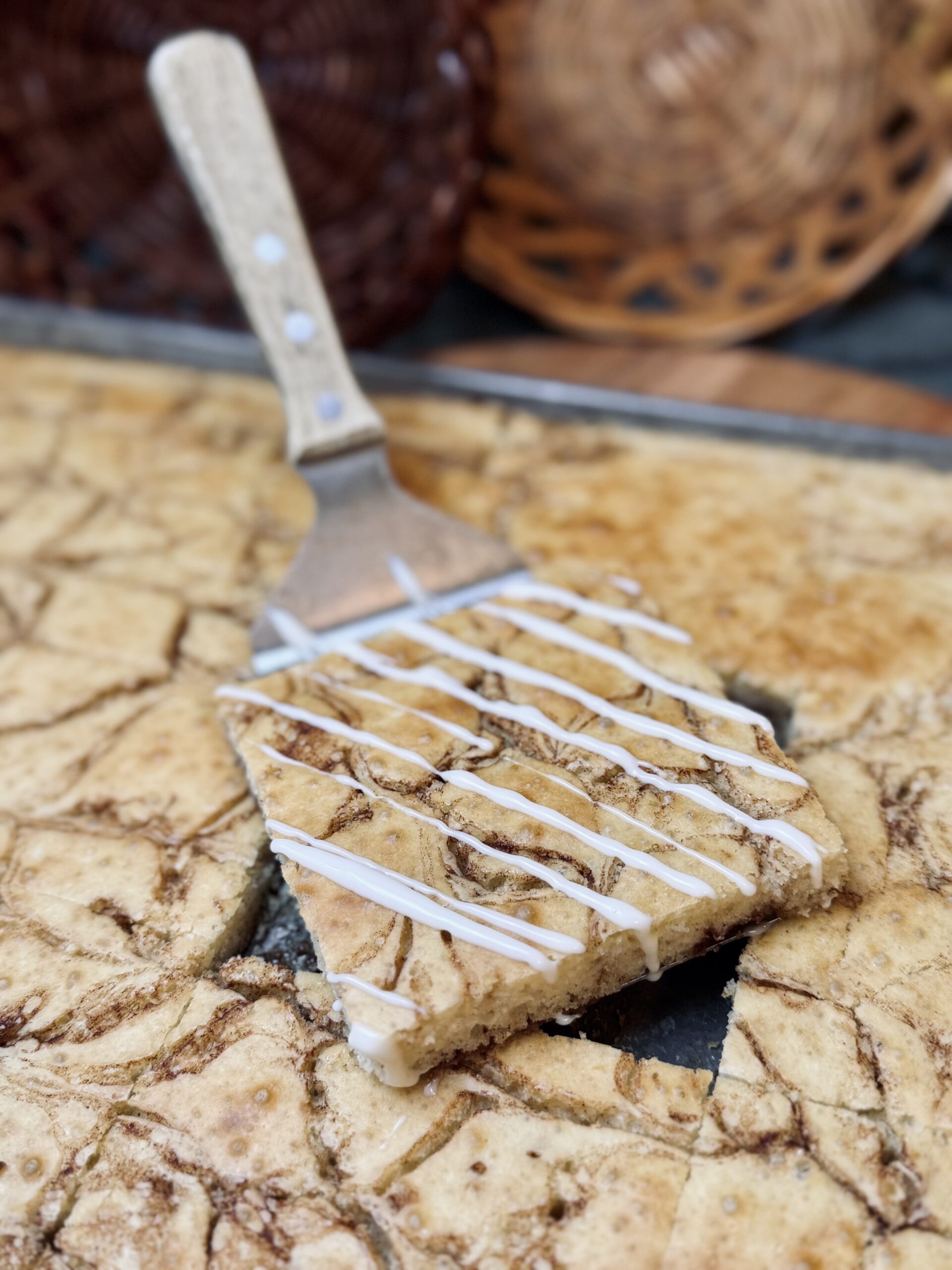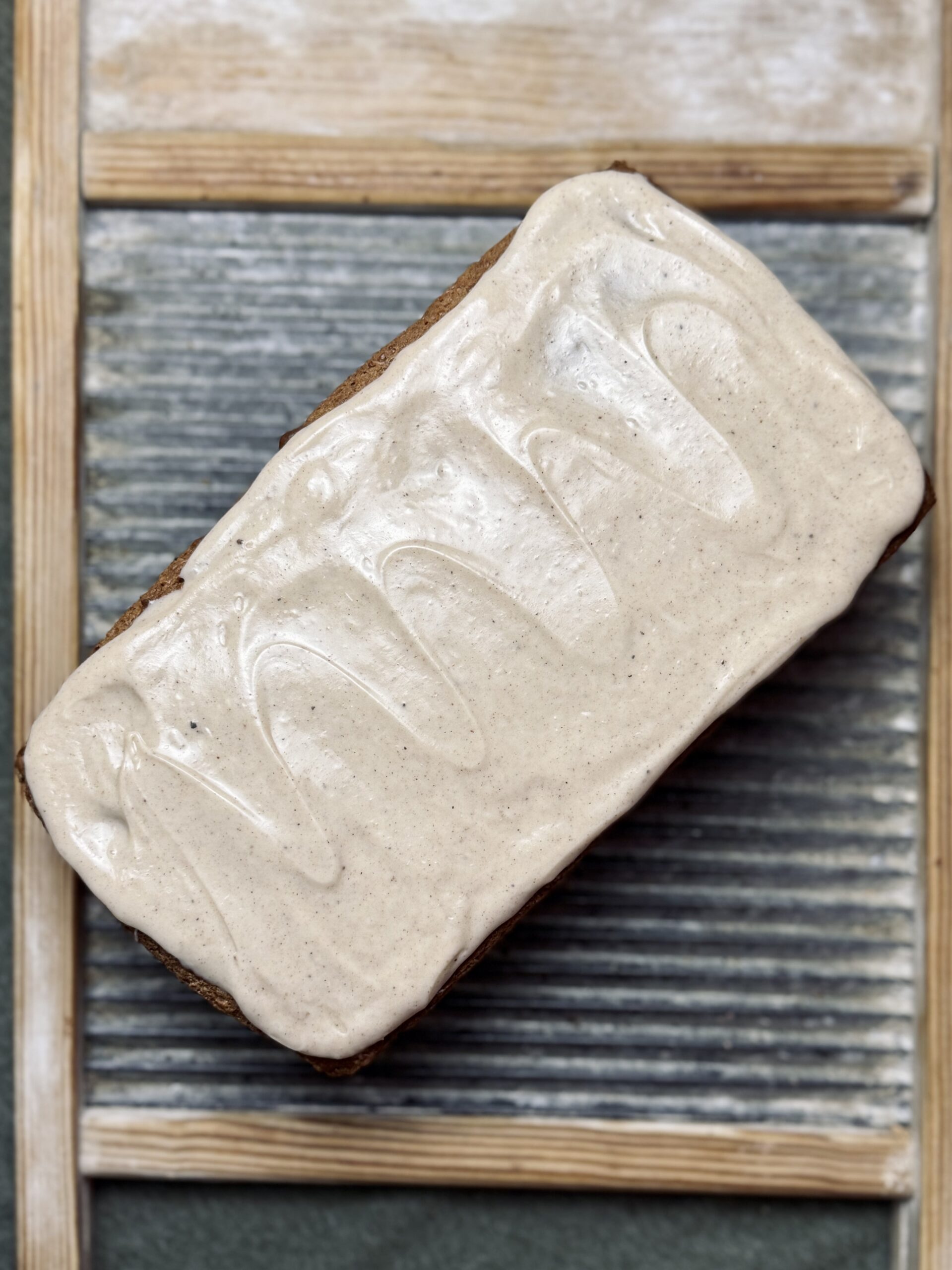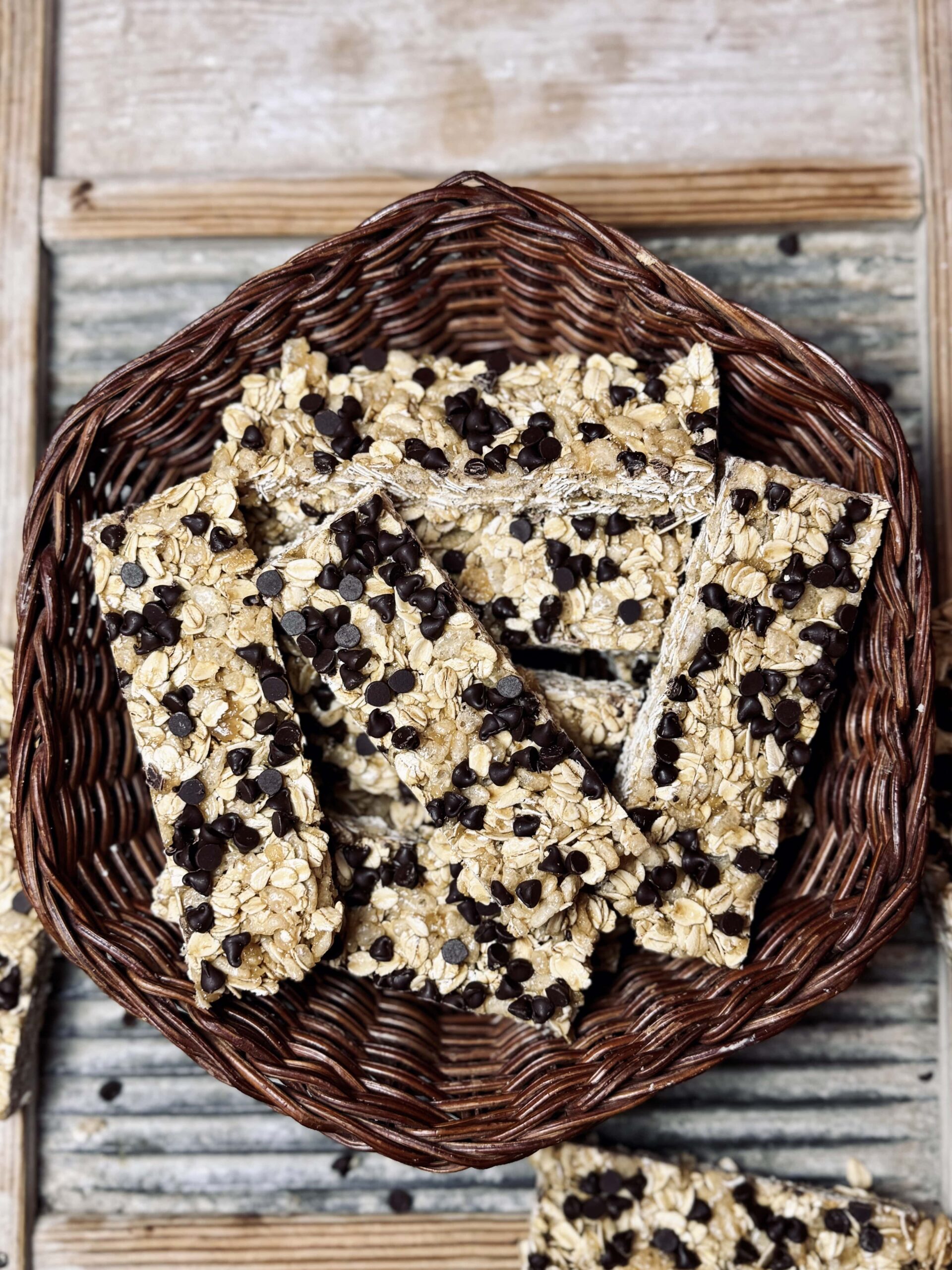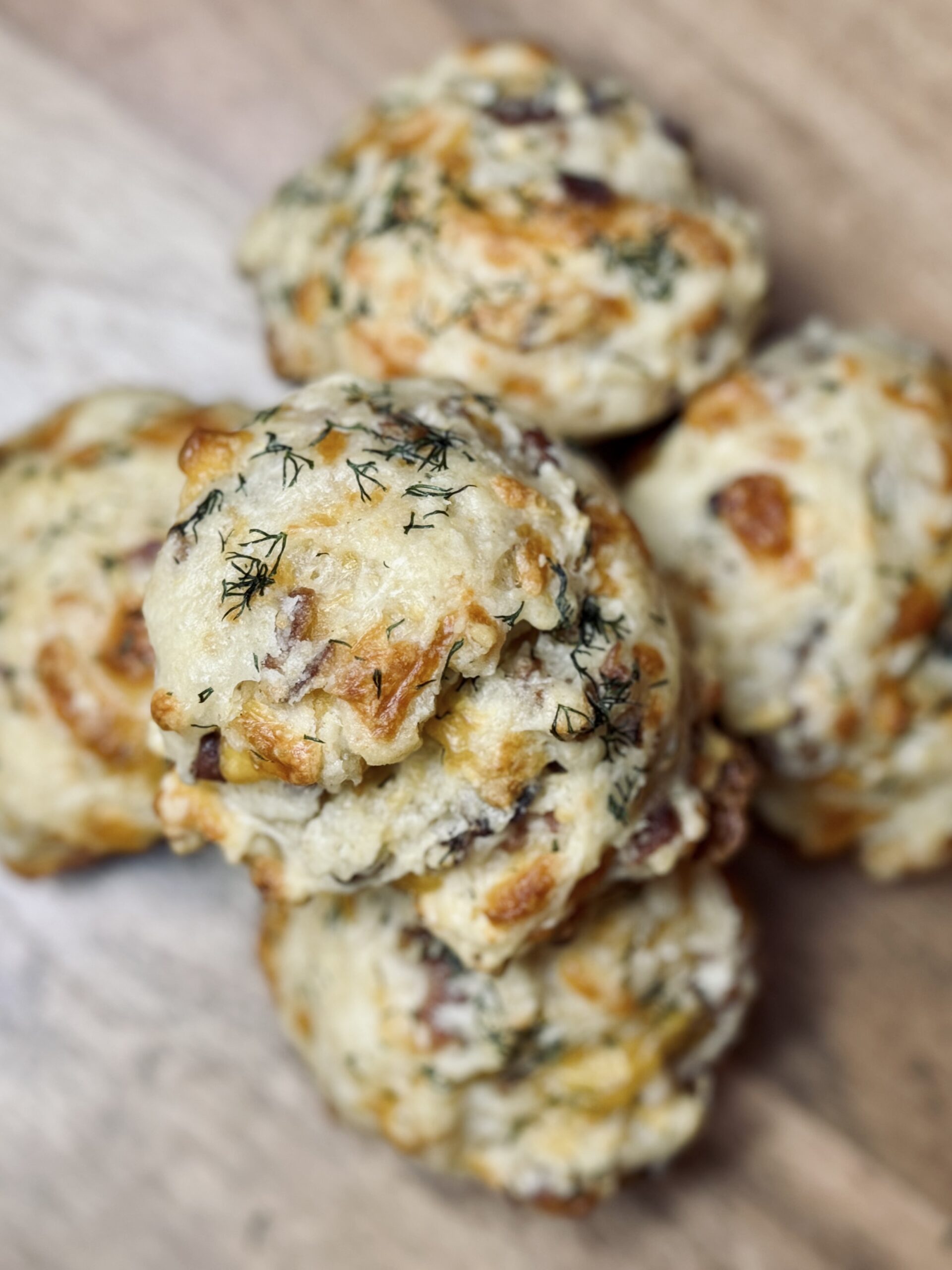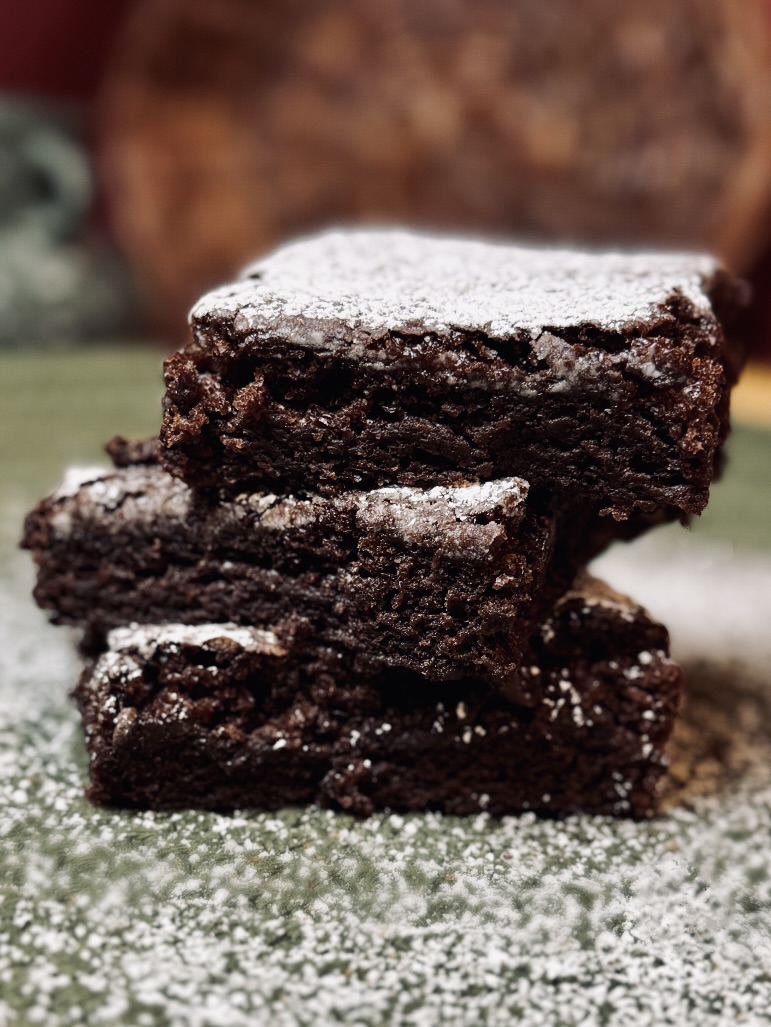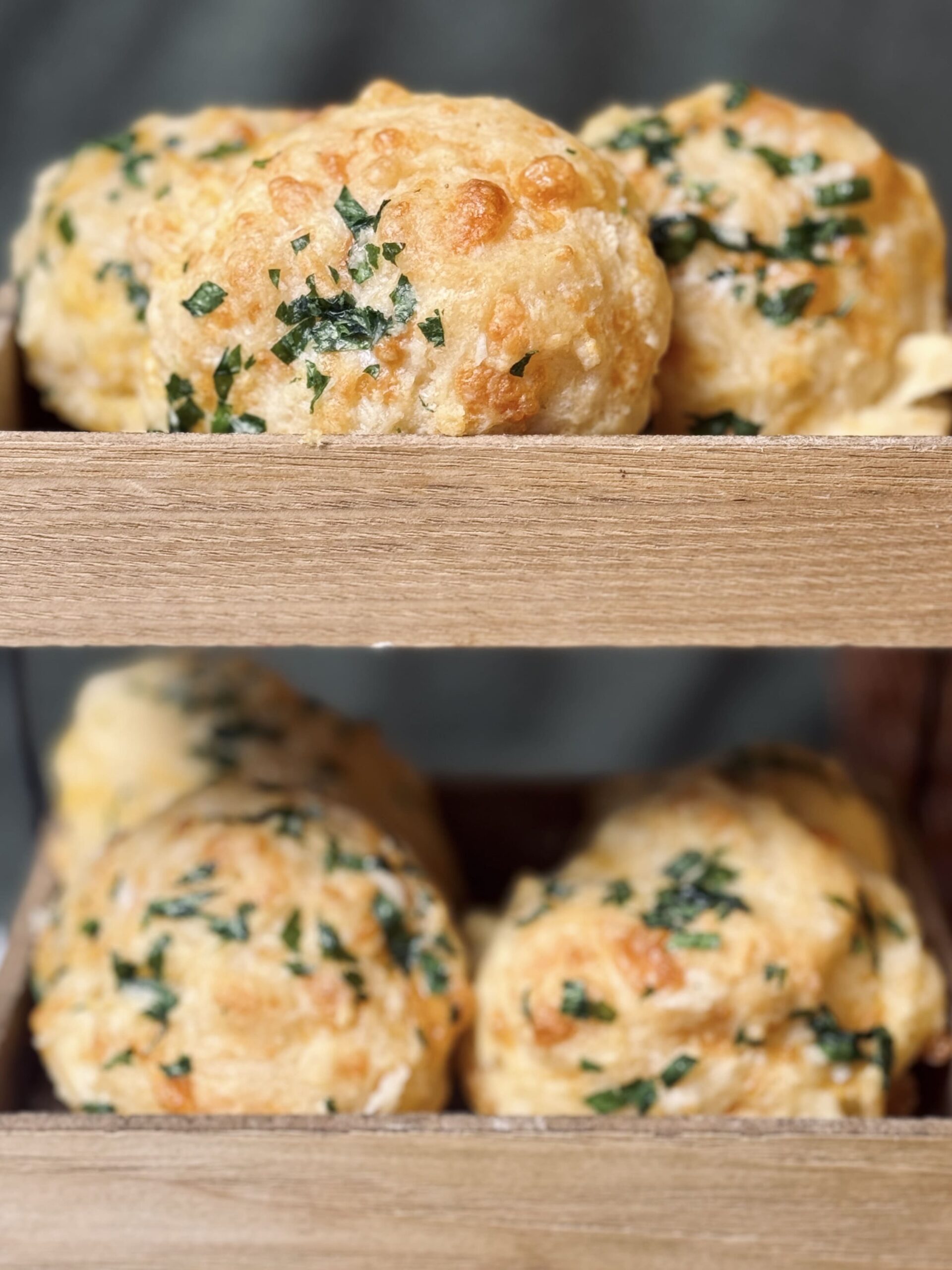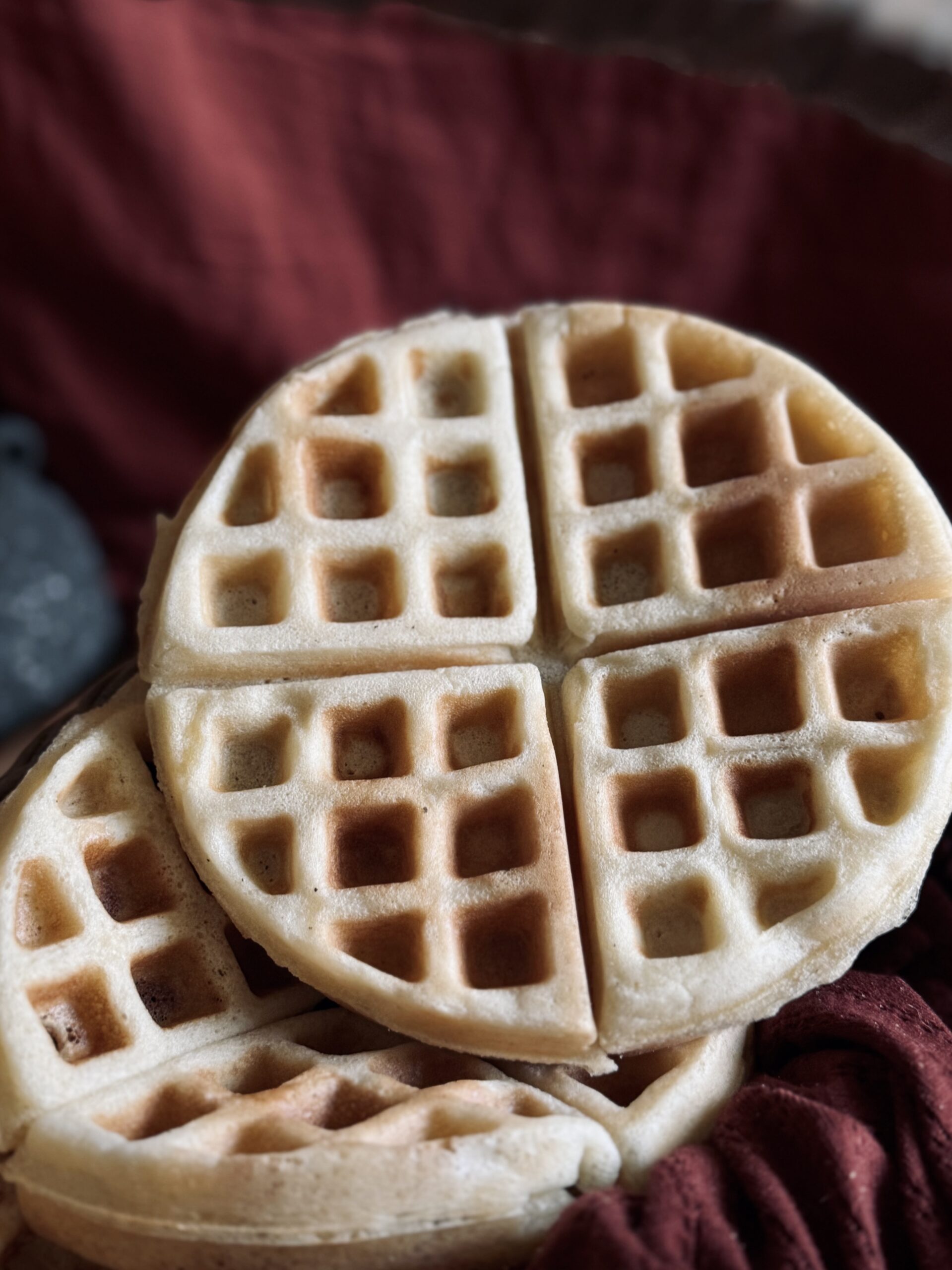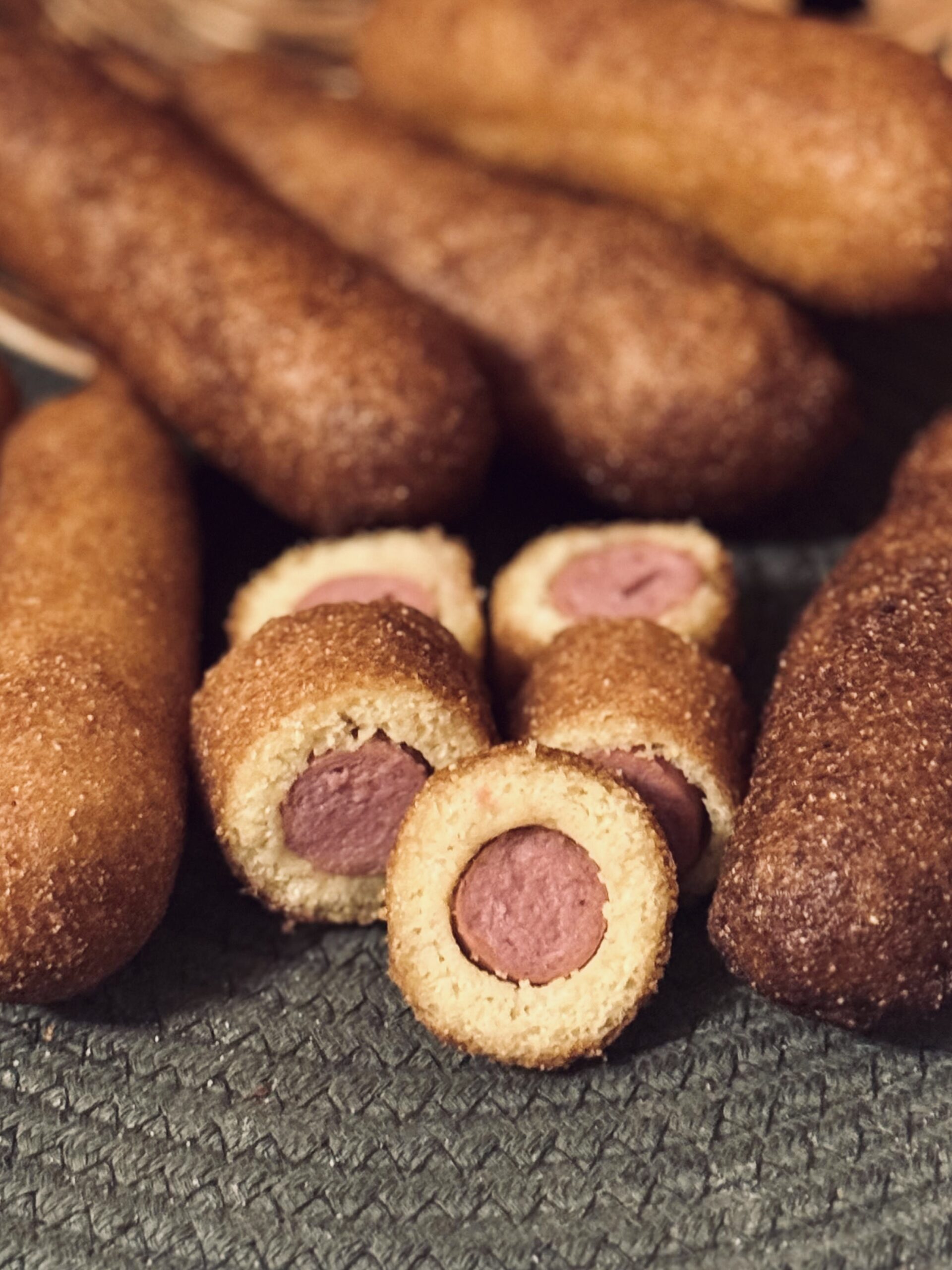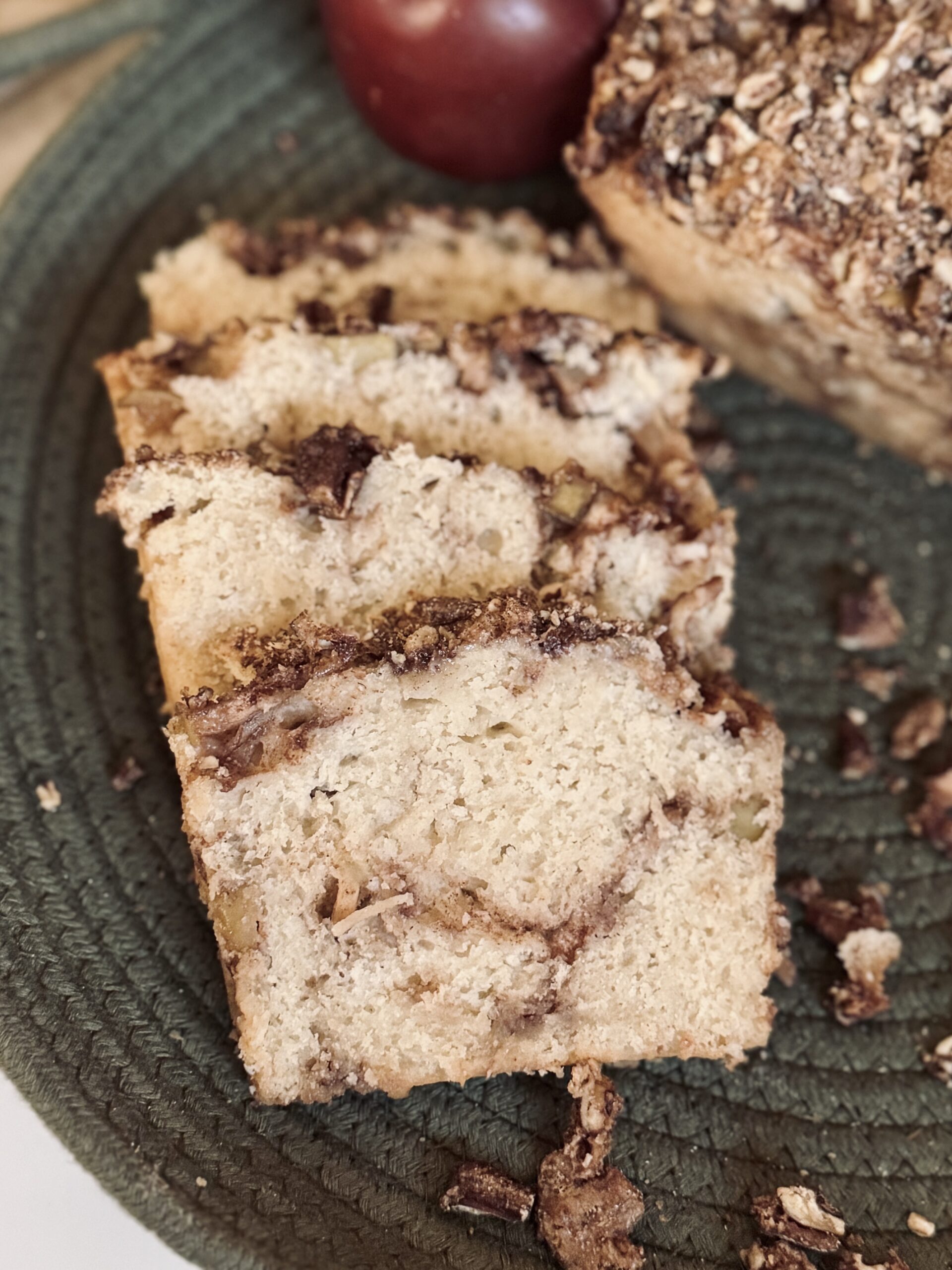About This Recipe
These are the biscuits of my dreams. Layered, buttery, and ultra tall. They are so buttery and layered, that I had to utilize my cast iron skillet to keep the biscuits from tipping over in the oven. But, honestly, I love that.
What Is A Rolled Biscuit?
These are not to be confused with drop biscuits or scones! A rolled biscuit is a specific type of biscuit that requires rolling out and cutting the dough. This type of biscuit uses cold ingredients and minimal working to create a tall, flaky biscuit with layers upon layers. Rolled biscuits should rise to twice their height during baking and have a soft and fluffy interior.
What I Love About This Recipe
Tall, buttery, fluffy, flaky – all characteristics of the perfect biscuit. These biscuits can be ready so fast and are the perfect companion to any breakfast. They will actually fall over in the oven if you do not use a skillet to bake them in, which, in my opinion, is a sign of a truly good rolled biscuit.
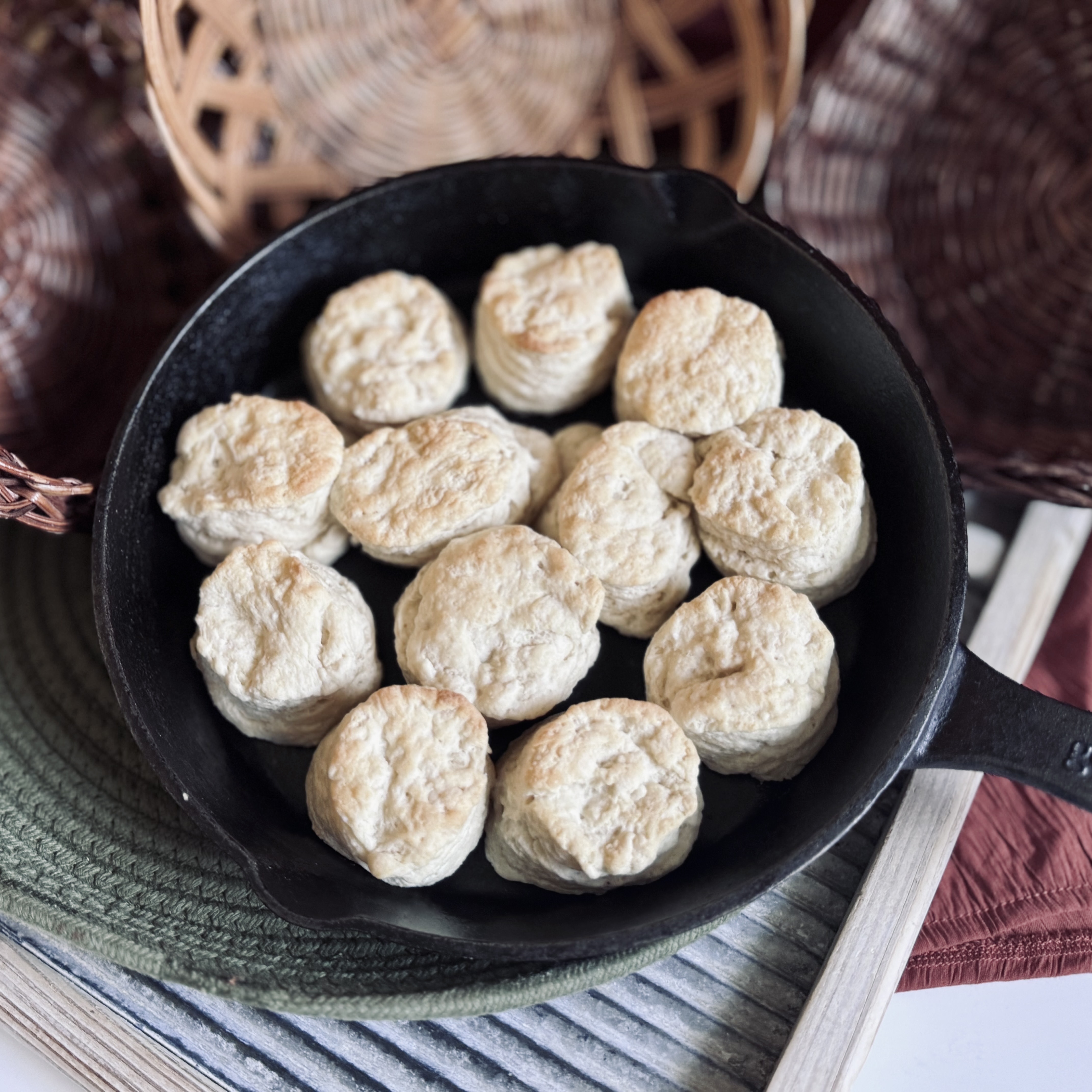
All The “Why’s”
All-Purpose Flour
All-purpose flour is perfect (actually, it’s necessary) for a recipe like this because gluten is undesirable. We want these biscuits to be flaky, not chewy. In fact, the lower the protein content, the better. Though I have not tested it, cake flour may even work wonders. The problem is: cake flour is not a staple ingredient in many homes; therefore, I choose not to base a recipe off of it unless it is absolutely necessary.
Baking Powder
A layered recipe like this would be virtually impossible without chemical leavening. That is because of the importance of cold ingredients. We need to work quickly, and our sourdough starter simply cannot work as quickly as we need. Even if we mixed the batter and left it in the fridge, we still would not be able to get the rise we need without baking powder. That’s because the yeast in your starter create the air that leavens the dough, and they cannot effectively work in the refrigerator. Only the bacteria in your starter are able to work at fermenting the flour in cold environments.
Salt
Salt brings out flavor in any dish – and that is its exact purpose here. Don’t skip it.
Butter
Butter is the secret ingredient to rolled biscuits. It’s what creates those layers upon layers. Use unsalted butter to control the salt content or salted butter if you love salt and extra flavor. (Don’t judge me – I usually use salted butter!) We need the butter to be cold and in pea-sized chunks for this recipe to work.
Why Cold Butter?
Butter releases gases as it warms that aid in rise and create flaky layers. This is why it needs to stay cold – because we want these gases to be released to their fullest potential in the oven for the best layers.
For this recipe, I use butter from the refrigerator because I work it quickly in a food processor and have my hands on the dough minimally before baking. If you don’t have a food processor, you can freeze the butter and grate it into your dry ingredients instead.
Pea-Sized Chunks
Butter chunks that are too big will cause uneven distribution of fat throughout the dough, and may result in pooling or unevenly baked biscuits. However, butter that is too incorporated will lead to a homogenous mixture that does not have near the spring or flakiness desired in a biscuit recipe, resulting in something more like a shortbread cookie. When it comes to biscuits, butter is incredibly important to creating rise and flakiness, and pea-sized chunks create just this.
Sourdough Discard
The sourdough discard in this recipe takes the place of milk (or buttermilk) and some of the flour. The main goal: to use as much as possible and still get great results. As for these biscuits, it serves as a source of moisture and as a binder that brings the dough together.
It is important to note that with this much sourdough discard, your biscuits may or may not be sour. It all depends on your maintenance routine and the health of your starter. You can taste your discard (just a smidgen) before making this recipe – it’ll tell you what the results might look like! I have made this recipe many times and have never had a sour outcome, while others cannot even imagine making a recipe like this because their discard is so sour. Sourness comes from the bacteria in your starter. When they overpopulate, you can taste it.
I also want to note that because this recipe is made with sourdough discard, rather than milk or buttermilk, the biscuits will not brown in the same way. If this bothers you, add some sugar to the dough to encourage browning (about one tablespoon should do) or brush the tops with milk or cream. I, personally, don’t mind the lack of browning, so I do not take any of these measures when I bake these biscuits.
Cold Ingredients
Having everything cold keeps the butter cold while we layer and cut the dough, which is very important to getting the desired outcome of this kind of biscuit.
Food Processor
The food processor is something I choose to use to make the process that much easier. It is the quickest and most efficient way to chop and incorporate butter into the dough quickly. Rolled biscuits can be made by hand by grating frozen butter into the flour, but I find this process tedious, time consuming, and not near as effective.
Creating Layers
More layers in the dough results in taller biscuits. Though the mixed dough could simply be pressed out, cut, and baked, I find one round of layer-creating creates taller, better-rising biscuits.
Minimal Working Of The Dough
I do not include a chilling step in this recipe. Alternatively, I use cold ingredients and work my dough quickly and minimally. This keeps the butter cold, as well as limits gluten-development, which is an important component to flaky biscuits. Minimal working also allows this recipe to be thrown together in under ten minutes, making for a quick breakfast.
Cutting The Biscuits
Though I have read that it is important not to twist the cutter as the dough is being cut, in order to prevent sealing, I have found this is not the secret. Instead, I use a sharp cutter and make sure my edges are straight and cut (no round, pressed pieces of dough). This, in addition to all the other factors above, will allow the biscuits to rise up tall, rather than being concealed and domed.
Cast Iron Skillet + Biscuit Placement
These biscuits are so layered and tall that they will actually fall over in the oven without the right placement. Because of this, I chose to use a cast-iron skillet, which is traditional for biscuits in Southern baking. The edges of the skillet provide support for the biscuits as they rise. In addition, it is important that the biscuits are lightly touching one another. As they pop up, they will provide each other support and keep each other rising upward, rather than falling over. They do not need to be mushed together, only lightly touching. In essence, any pan will do, as long as the biscuits have light support on all sides.
Baking Temperature + Time
I bake these in a 450 F (230 C) oven for fifteen to eighteen minutes. The hot oven helps provide a beautiful “pop” on these biscuits, and contributes to their tall rise. Though the biscuits are cooked through by fifteen minutes, they will still be soft on the outside. If you prefer a crisper outer edge on your biscuits, go for the longer amount of time.
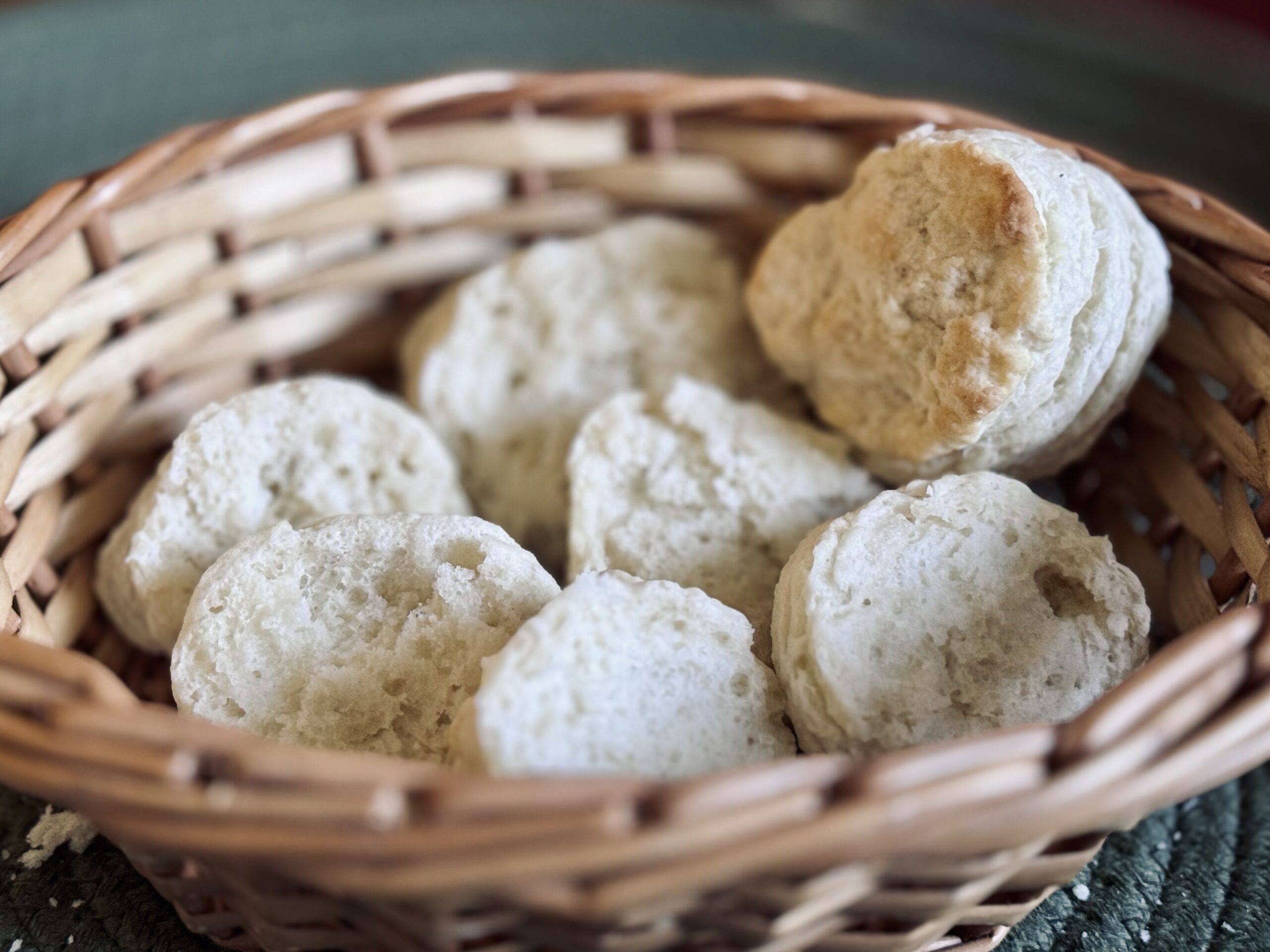
📌 Quick Tip: Read the recipe in its entirety before you start cooking. This will help you understand the ingredients, steps, and timing involved, and allow you to prepare any necessary equipment or ingredients beforehand.
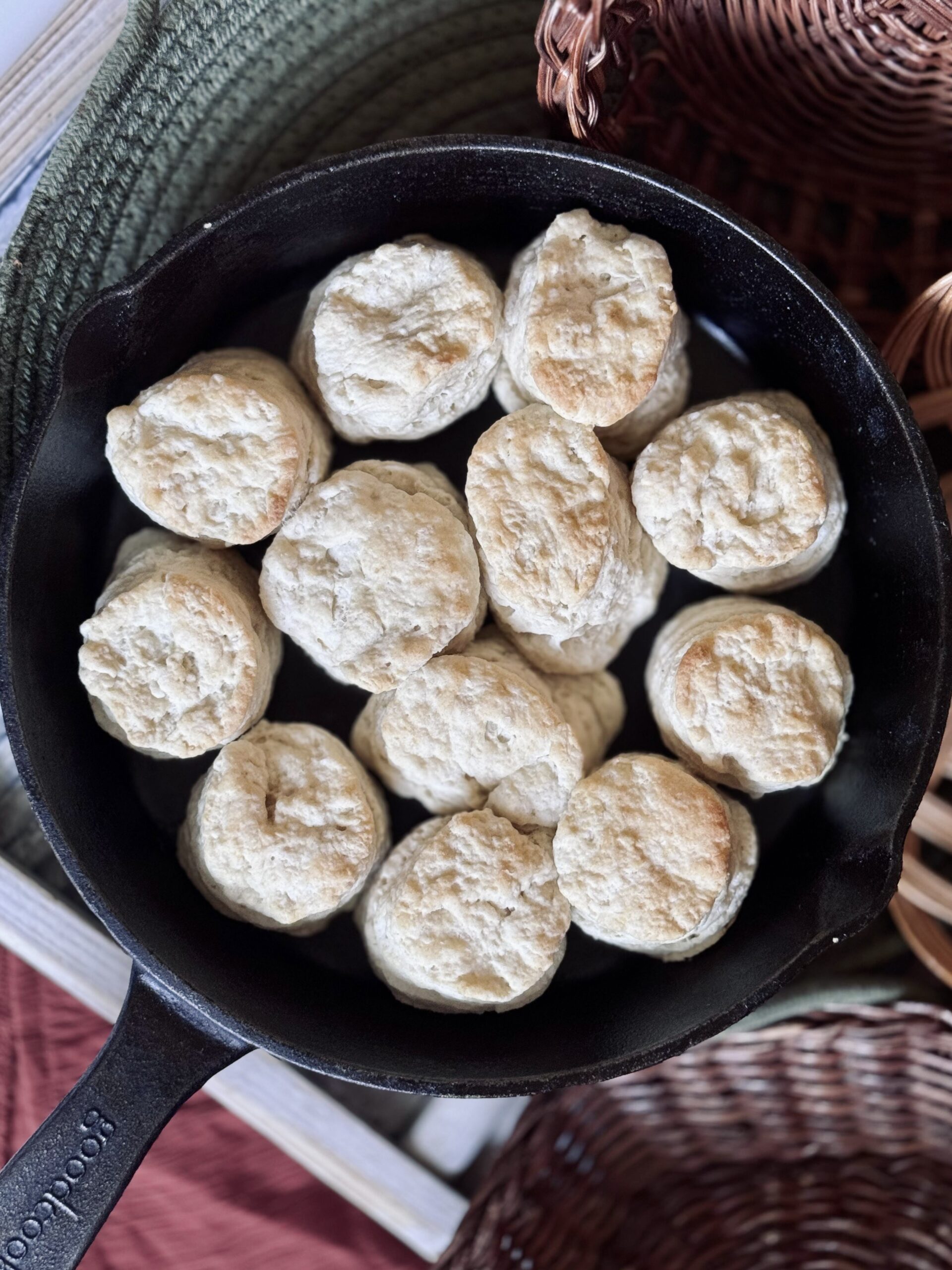
Rolled Biscuits
Ingredients
Instructions
-
Preheat an oven to 450 F (230 C).
-
Mix the flour, baking powder, and salt in the bowl of a food processor. Pulse to combine.
-
Add the cold, cubed butter and pulse to form pea-sized chunks. Transfer to a bowl.
-
Add the sourdough discard. Working quickly and minimally, combine all the ingredients until just barely combined and beginning to feel sticky. I use my hands, starting in the bowl and finishing on the counter, but any preferred method will work.
-
Roll the dough out to about ¼ inch thickness, then fold into thirds two times to create nine layers. I start by folding in the left and right sides, then finish with the top and bottom.
-
Now, roll the dough out to ½ to ¾ inch thickness. Cut with biscuit cutters, or use a knife to form your desired shape. I use a 2 ½ inch round biscuit cutter and, depending on how thick I roll out the dough, get 12 to 14 biscuits from this recipe.
-
Take the extra dough scraps, press or roll out, and continue making biscuits until all the dough is used up.
-
Place the biscuits in a 9 or 10 inch cast iron skillet, making sure they are touching each other and the sides of the skillet lightly. The biscuits should not be squished into each other, only lightly touching a single object in each cardinal direction.
-
Bake for 15-18 minutes. Enjoy fresh.
Nutrition Facts
Servings 12
- Amount Per Serving
- Calories 234kcal
- % Daily Value *
- Total Fat 12.32g19%
- Saturated Fat 7.32g37%
- Cholesterol 30.45mg11%
- Sodium 290.77mg13%
- Potassium 52.67mg2%
- Total Carbohydrate 26.52g9%
- Dietary Fiber 1.03g5%
- Sugars 1.35g
- Protein 4.72g10%
- Vitamin A 96.9 IU
- Calcium 130.78 mg
- Iron 1.97 mg
- Vitamin E 0.42 IU
- Vitamin K 1.23 mcg
- Thiamin 0.31 mg
- Riboflavin 0.19 mg
- Niacin 2.25 mg
- Vitamin B6 0.03 mg
- Folate 20.64 mcg
- Vitamin B12 0.02 mcg
- Phosphorus 198.15 mg
- Magnesium 13.23 mg
- Zinc 0.41 mg
* Nutrition values are auto-calculated and should be used as an approximation only.
Notes
- Storage: These are best eaten fresh, but will store on the counter for one to two days. Alternatively, freeze prepared and unbaked biscuits and bake the morning you want to eat them!
- Sourdough discard and flour are two of the most inaccurate ingredients to measure by volume. I kid you not when I say I get a different measurement every time. The volume of sourdough discard, specifically, changes drastically depending on how old it is. For best results, I recommend weighing your ingredients.
